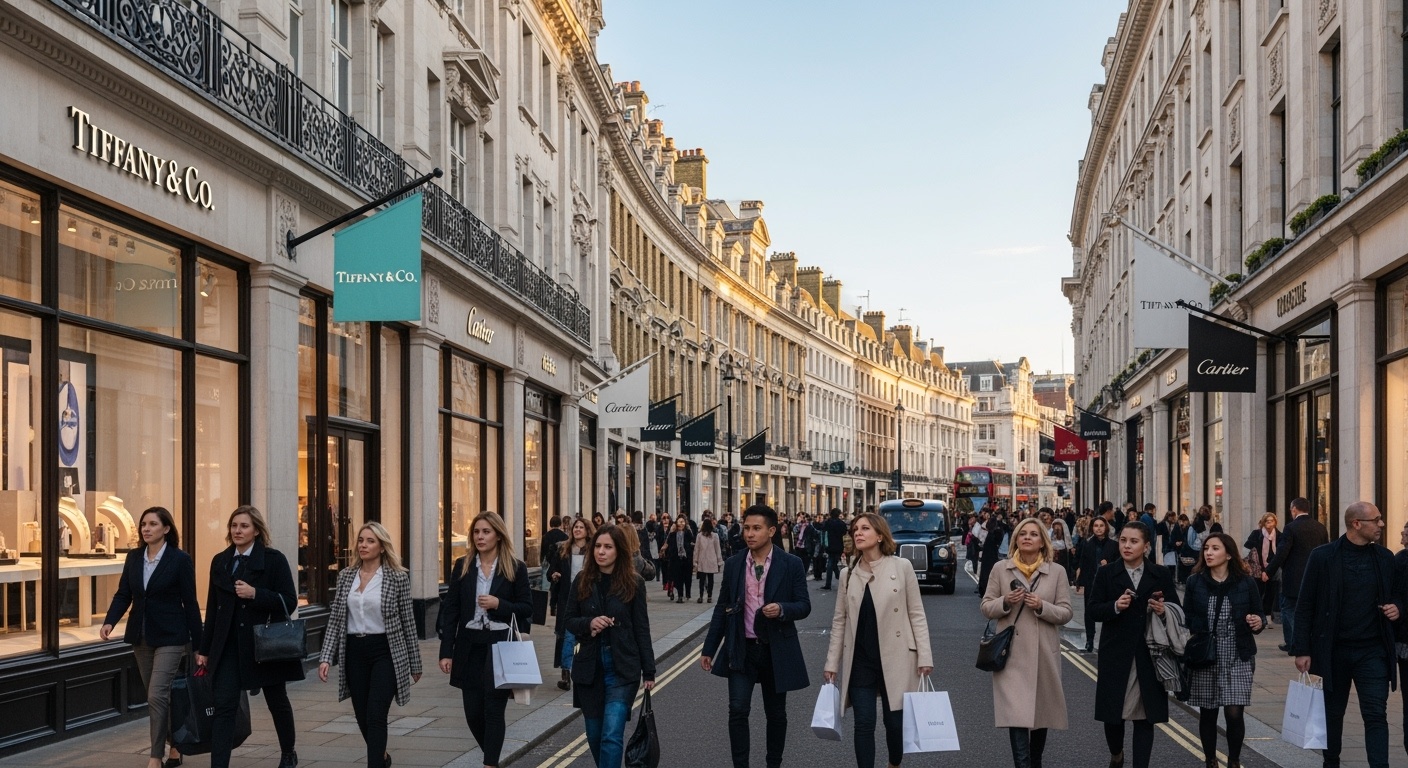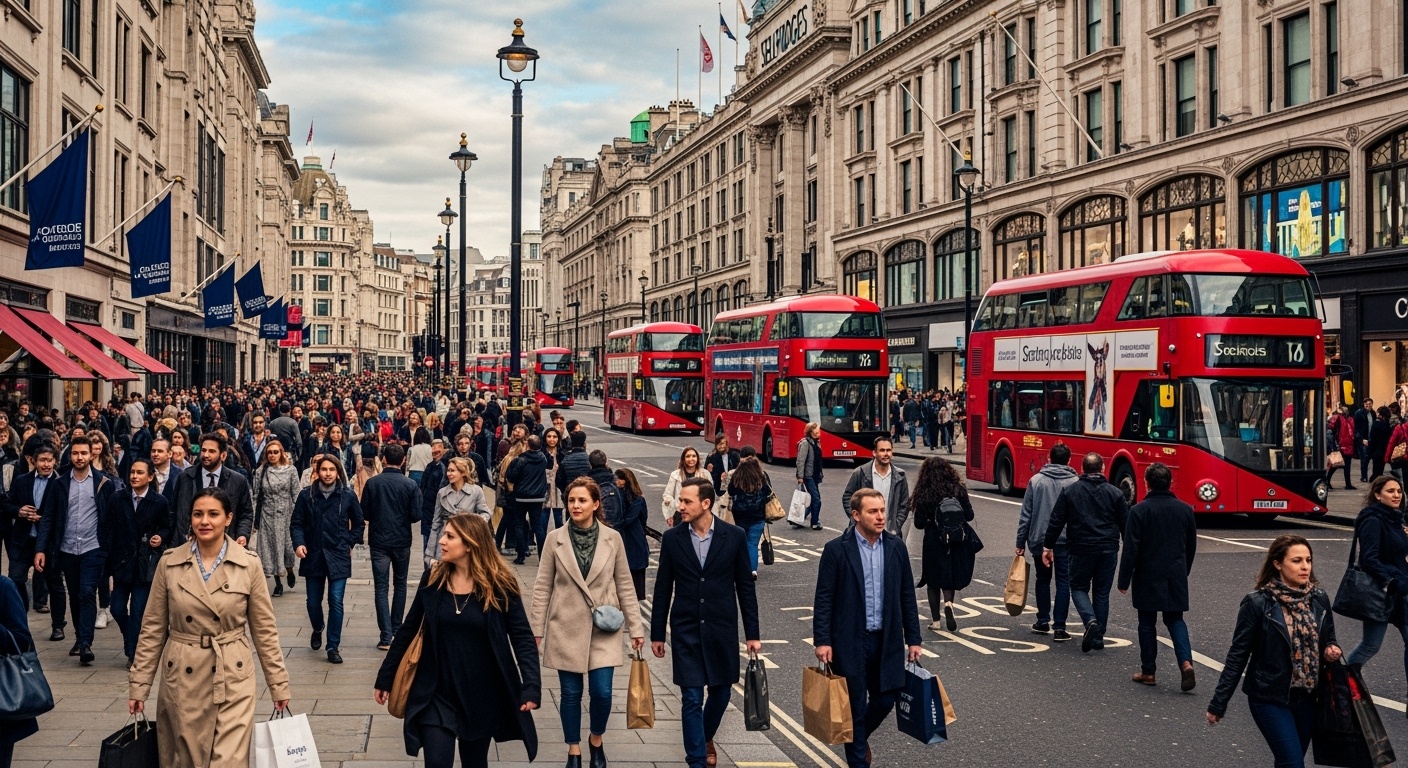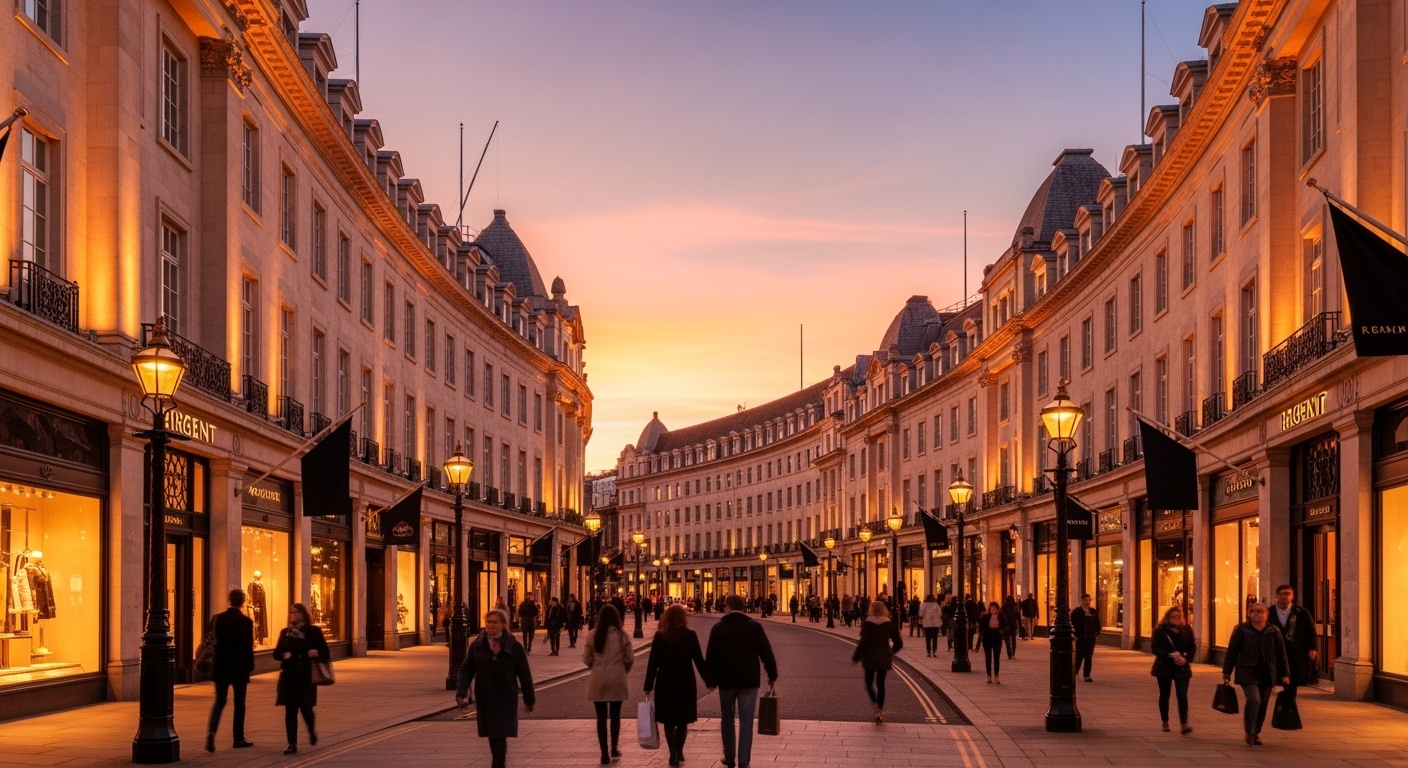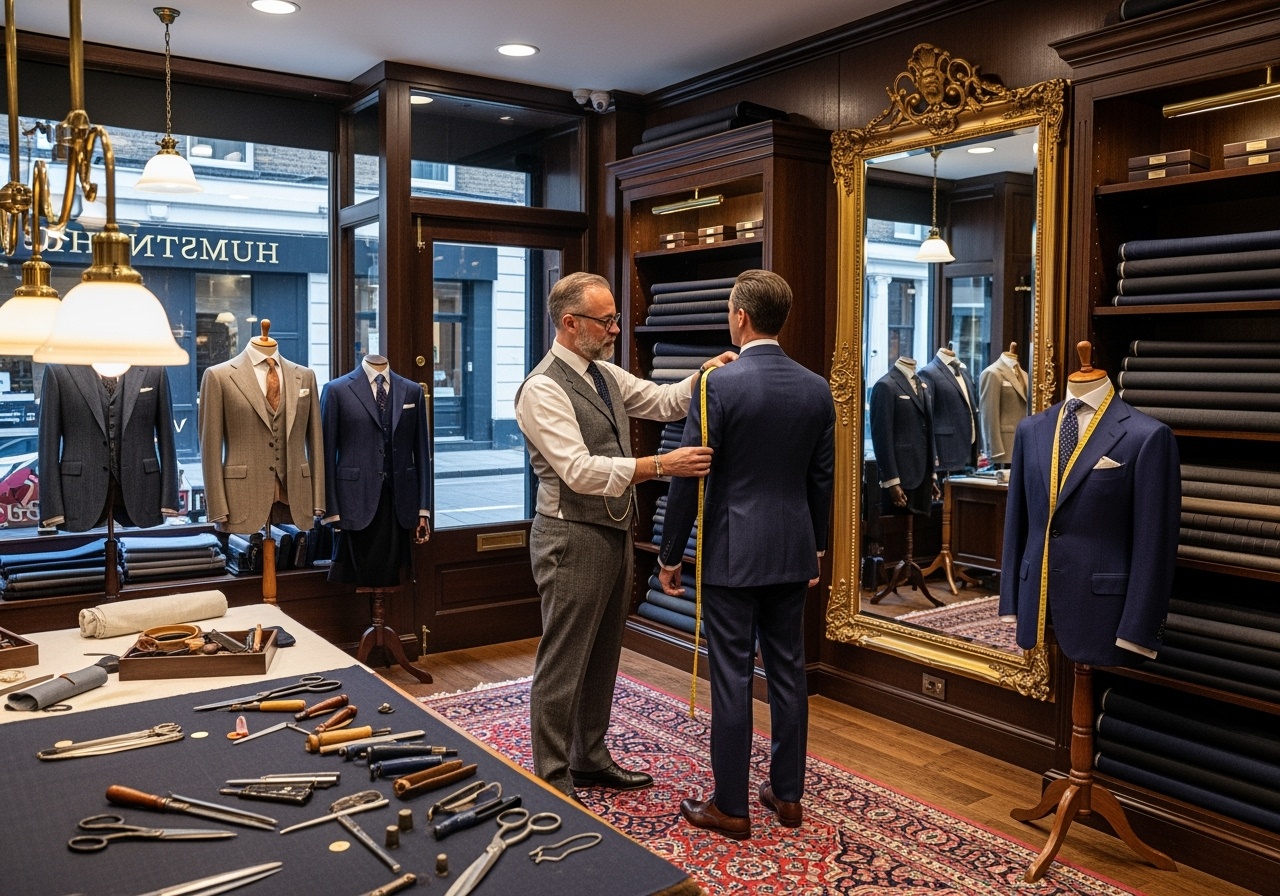
Your comprehensive guide to the world's finest shopping streets and luxury retail destinations
Explore Shopping DistrictsW1 London stands as one of the world's premier shopping destinations, rivalling Paris, Milan, and New York for retail excellence and luxury brand concentration. From Bond Street's legendary luxury flagships to Oxford Street's bustling department stores, from Regent Street's architectural grandeur to Savile Row's bespoke tailoring heritage, W1 offers an unparalleled shopping experience encompassing every aspect of retail from haute couture to high street.
This compact area hosts over 300 international brands, dozens of flagship stores, historic department stores, and specialist retailers that have served discerning customers for generations. The combination of architectural beauty, retail diversity, and exceptional service creates a shopping environment found nowhere else. Whether seeking the latest haute couture collection, a bespoke Savile Row suit, or simply exploring the world's most famous shopping streets, W1 delivers experiences that transcend mere retail transactions.
Shopping in W1 means more than acquiring products—it's about experiencing retail theatre at its finest. Flagship stores designed by renowned architects, personal shopping services catering to individual preferences, exclusive product launches, and the prestige that comes with shopping on streets that have defined luxury retail for centuries. This guide provides comprehensive information about W1's shopping districts, helping you navigate London's retail heart and discover everything from established luxury houses to emerging designer boutiques.

W1's retail streets attract over 200 million visitors annually, generating billions in retail sales. Bond Street alone hosts over 100 luxury brands, whilst Oxford Street welcomes approximately 300,000 visitors daily, making it Europe's busiest shopping street by foot traffic.
Where the world's most prestigious brands showcase their finest creations

Bond Street represents the pinnacle of luxury retail globally. Divided into Old Bond Street (developed in the 1680s) and New Bond Street (added in the 1720s), this legendary thoroughfare has been synonymous with luxury, quality, and prestige for over three centuries. Today, Bond Street hosts the flagship stores of virtually every major luxury brand, creating an unrivalled concentration of retail excellence.
The world's most prestigious fashion houses maintain flagship stores on Bond Street, showcasing their latest collections in stunning architectural settings:
Bond Street's jewellers and watchmakers represent the pinnacle of horological and jewellery expertise:
Bond Street's luxury extends beyond fashion and jewellery. The street has long been home to prestigious art dealers and auction houses:
Shopping on Bond Street transcends typical retail. Many stores offer:
Bond Street Underground station (Central, Jubilee, and Elizabeth lines) provides direct access to the shopping area. The station's recent refurbishment as part of the Elizabeth line creates an even more elegant arrival point worthy of the prestigious shopping street above.
Bond Street has hosted luxury retail since the 18th century. Famous customers throughout history include Lord Nelson, Winston Churchill, and countless members of royalty. This centuries-long heritage of serving discerning clientele continues today with modern luxury shoppers from across the globe.
Oxford Street stretches for 1.5 miles through the heart of London's West End, hosting over 300 shops and attracting approximately 300,000 visitors daily. This makes it Europe's busiest shopping street and one of the most famous retail destinations globally. From flagship department stores to international high street brands, Oxford Street offers something for every shopper and every budget.
Oxford Street's department stores are destinations in their own right, each offering comprehensive retail experiences under one roof:
Perhaps London's most famous department store, Selfridges Oxford Street opened in 1909 and remains at the forefront of retail innovation. The store's iconic façade and window displays are landmarks in themselves. Inside, you'll find:
The flagship store of this British institution offers:
The largest M&S store showcasing:

Oxford Street hosts flagship stores for numerous high street and international brands:
Oxford Street divides into distinct sections:
Throughout the year, Oxford Street hosts special events:
Multiple Underground stations serve Oxford Street: Marble Arch (Central line), Bond Street (Central, Jubilee, Elizabeth lines), Oxford Circus (Central, Victoria, Bakerloo lines), and Tottenham Court Road (Central, Northern lines). The street is also served by numerous bus routes and is largely pedestrianised during peak shopping hours.

Regent Street was purpose-designed by architect John Nash in the early 19th century to connect the Prince Regent's residence with Regent's Park. The street's elegant curved architecture, uniform building heights, and grand facades create one of London's most beautiful shopping environments. Today, Regent Street combines architectural heritage with contemporary flagship retail experiences.
Regent Street specialises in flagship stores that offer more than mere retail—they provide branded experiences and entertainment:
The streets surrounding Regent Street—including Carnaby Street, Foubert's Place, and Kingly Court—create a comprehensive shopping quarter with additional independent boutiques, restaurants, and lifestyle stores.
Regent Street hosts numerous events throughout the year:
Beyond shopping, Regent Street offers architectural interest. The current buildings date from the 1920s rebuild in a unified architectural style, creating the harmonious streetscape we see today. The gentle curve of the street, designed to create dramatic views, remains one of London's most photographed vistas.
The Crown Estate manages Regent Street, maintaining high standards for tenants and ensuring the street remains at the forefront of retail innovation whilst respecting its architectural heritage.
Savile Row has been synonymous with the finest bespoke tailoring since the 19th century. This short Mayfair street hosts tailoring houses that have dressed royalty, politicians, celebrities, and discerning gentlemen for generations. The term "bespoke" itself originated on Savile Row, referring to cloth that had been "spoken for" by an individual customer.
Savile Row's traditional tailors maintain centuries-old techniques whilst creating contemporary suits for modern clients:
Creating a bespoke Savile Row suit is a meticulous process typically involving:
The entire process typically takes 8-12 weeks and involves 50+ hours of skilled handwork. The result is a garment cut specifically for the individual's body, with every detail customised to preference.

Whilst maintaining traditional craftsmanship, Savile Row has evolved to serve contemporary clients:
Several Savile Row houses now offer bespoke tailoring for women, adapting traditional techniques to female physique whilst maintaining the quality and craftsmanship the street is famous for.
Savile Row tailors offer comprehensive bespoke services:
A bespoke Savile Row suit represents a significant investment, typically starting from £4,000-£6,000 and ranging upwards depending on cloth choice and complexity. However, clients view this as investment in:
Most Savile Row tailors welcome appointments for consultations. Unlike high street retail, the bespoke experience emphasises personal relationships between tailor and client. Many houses serve multiple generations of the same family, with patterns kept on file for decades enabling consistent fit across repeated commissions.
In contrast to the flagship stores of Bond Street and Oxford Street, Marylebone High Street offers a curated selection of independent boutiques, specialist shops, and unique retailers that reflect the neighbourhood's village character.
Shopping in Marylebone feels different from other W1 areas. The emphasis is on:
Every Sunday, Marylebone's car park hosts a popular farmers' market where local producers sell:
This charming side street offers additional independent shops and boutiques, creating a delightful shopping experience away from major thoroughfares. The street exemplifies Marylebone's village character with small-scale retail and personal service.
For more about Marylebone's unique character and amenities, visit our comprehensive Soho district guide to explore another distinctive W1 neighbourhood.
W1's shopping calendar features major sales events offering rare opportunities for discounts:
During February and September, London Fashion Week brings additional energy to W1's shopping streets with:
The festive period transforms W1's shopping streets:
New flagship store openings often feature:
For comprehensive information about shopping in Britain, including VAT refund information for international visitors, visit Visit Britain's official shopping guide.
Many W1 stores and department stores offer complimentary or paid personal shopping services:
International visitors can reclaim VAT (currently 20%) on purchases:
Minimum purchase amounts apply, and some stores use digital systems simplifying the process.
Many stores offer alteration services to ensure perfect fit:
Stores offer various delivery options:
W1 shopping areas generally provide good accessibility:
Luxury living and Bond Street shopping excellence
Discover Mayfair →Village boutiques and independent retailers
Visit Marylebone →Creative quarter with unique shopping experiences
Explore Soho →Return to our W1 London homepage or contact us at advertise@thew1london.com for advertising opportunities.